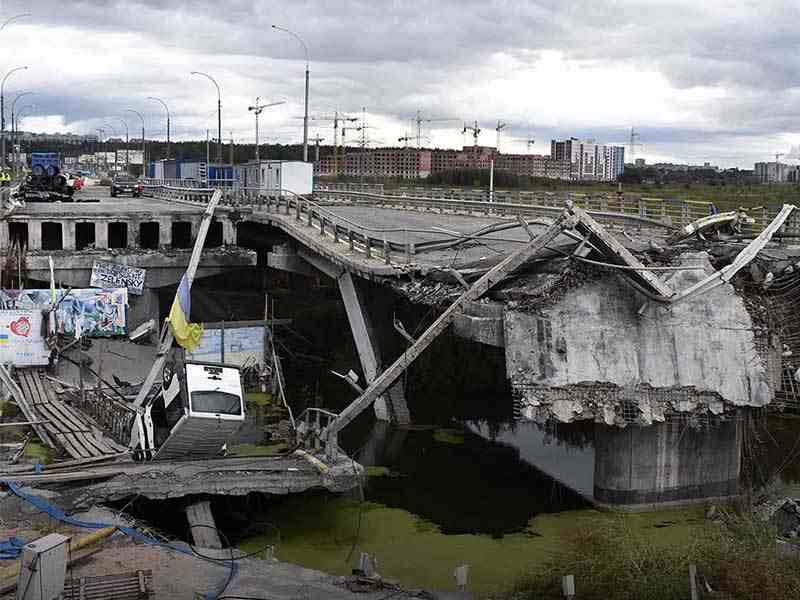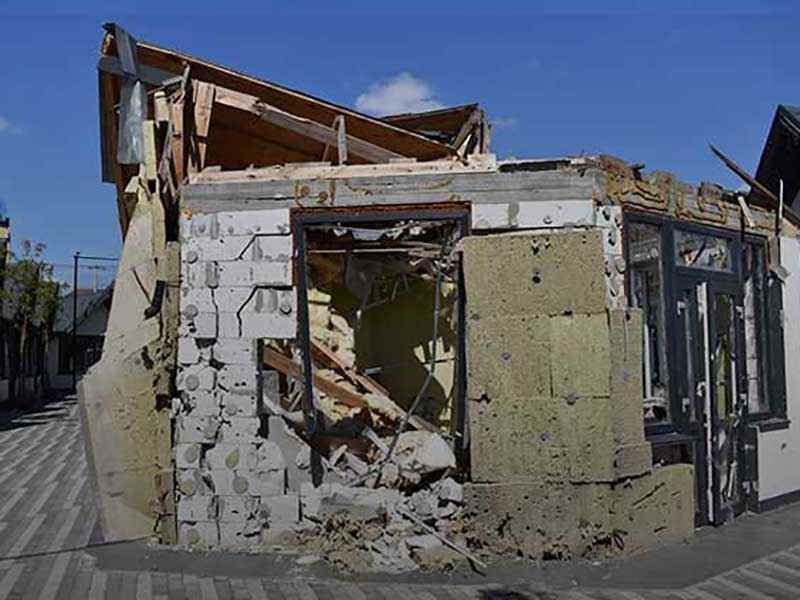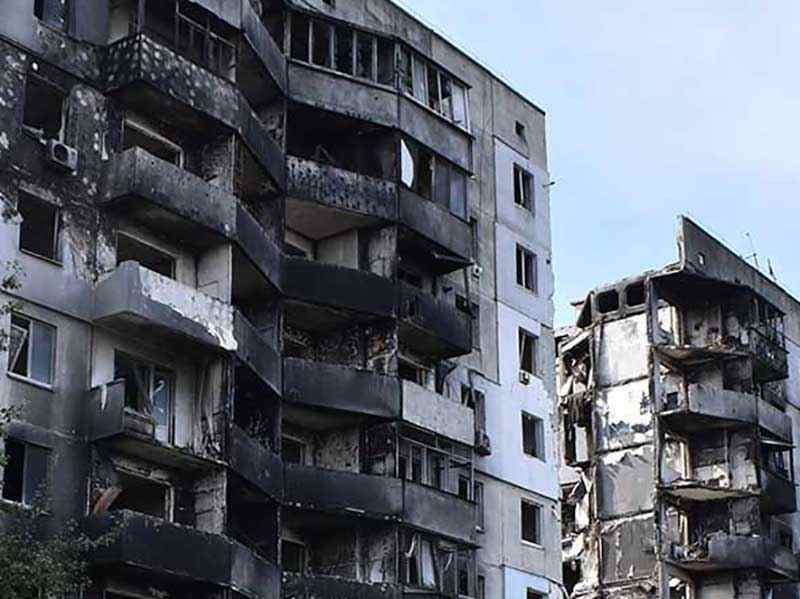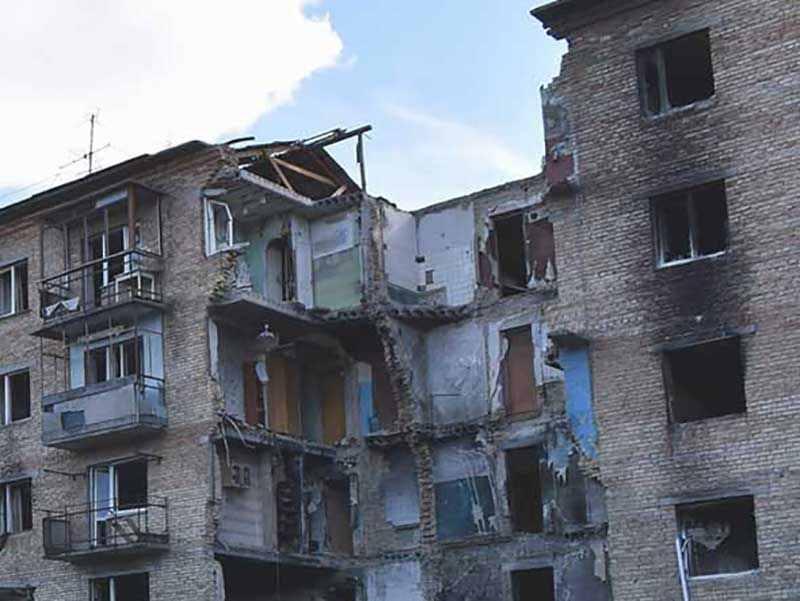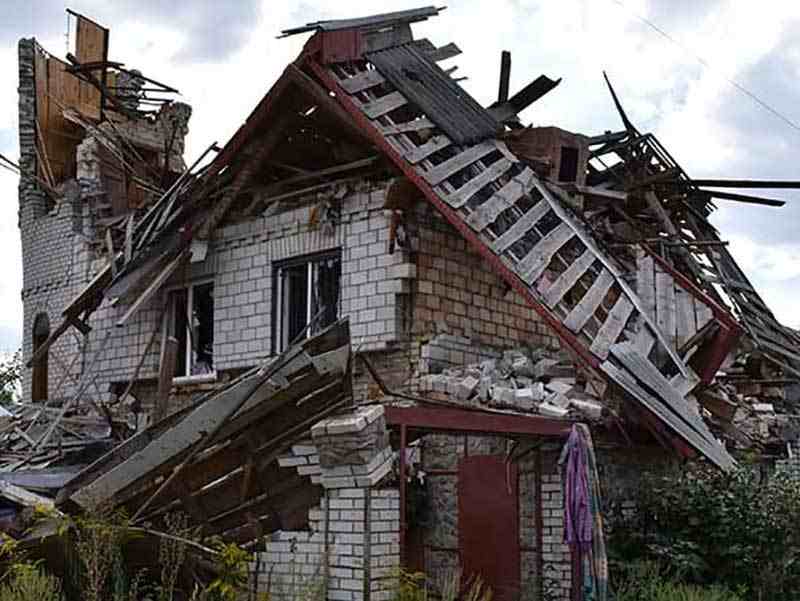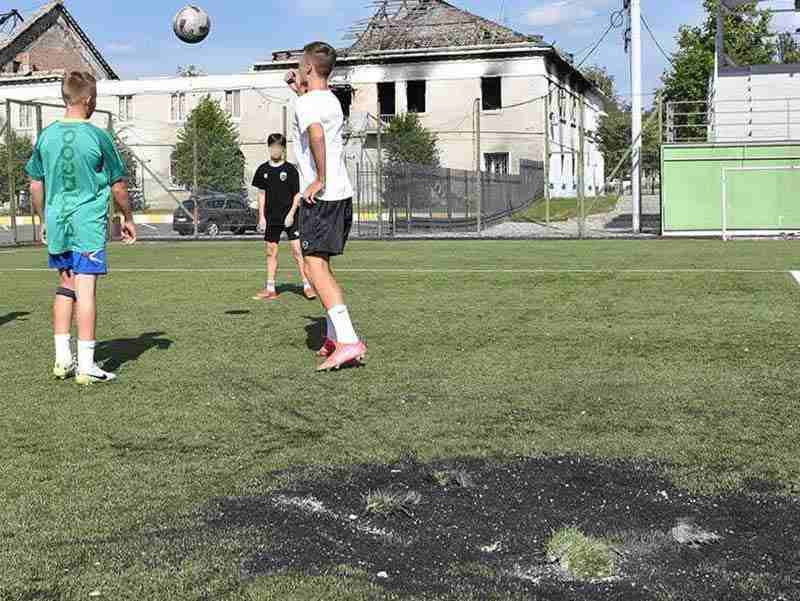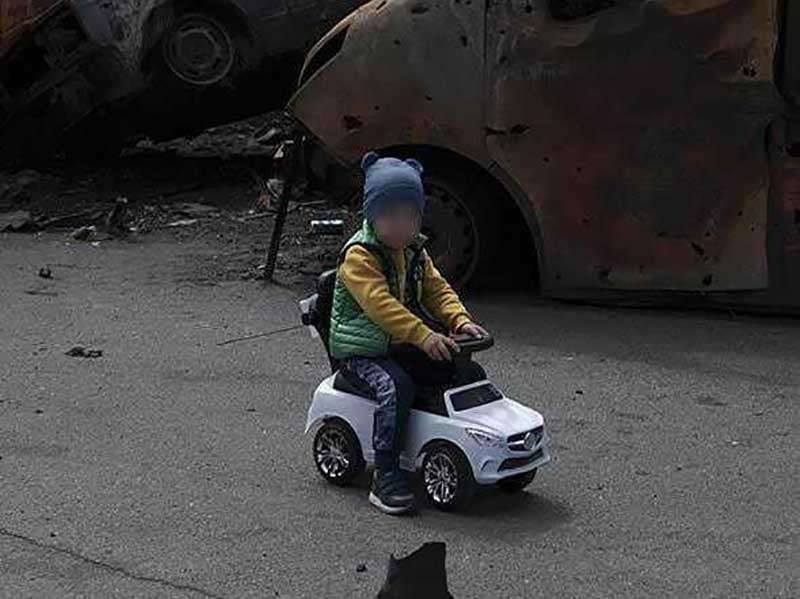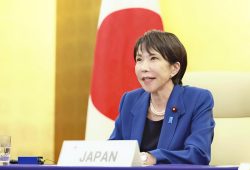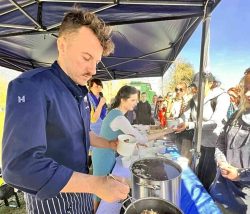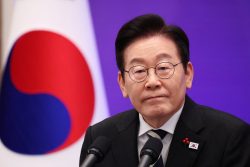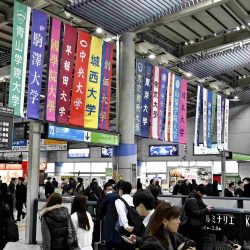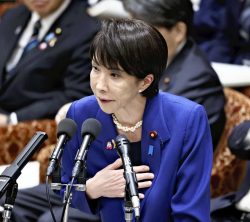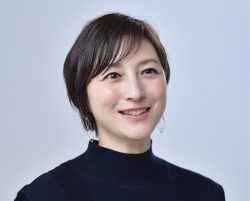Sergey Revenko, 28, who works at an architectural office in Kyiv, took about 1,500 photos of a destroyed bridge to create a 3-D model.
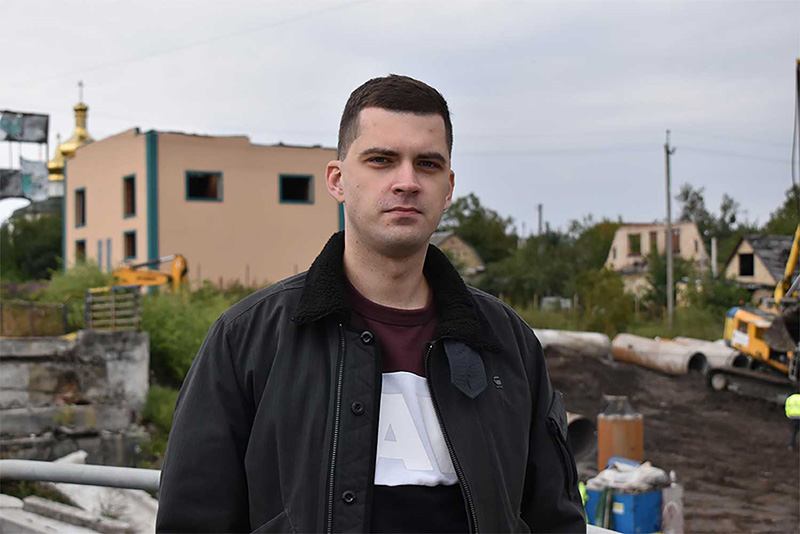
The bridge spanned a river that forms the border between Kyiv and the suburb of lrpin. In late February, Ukrainian forces deliberately blew it up to stop Russian forces from advancing on Kyiv. Although Russian troops would occupy Irpin, it was later liberated.
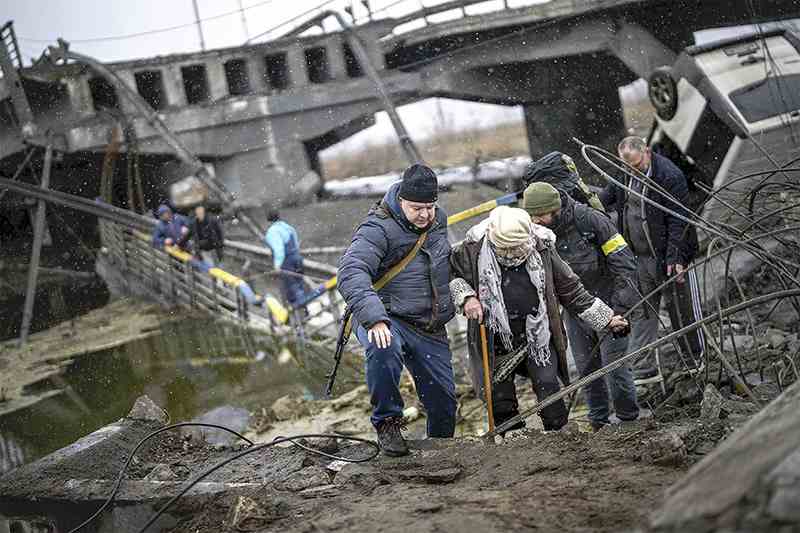
People evacuate across wooden planks laid between a collapsed bridge on March 1.
Ukrainian President Volodymyr Zelenskyy had expressed his intention to have the damaged bridge preserved as a war relic. Hearing that, Revenko and his colleagues, created the 3-D model as a resource. When he posted it on social media, it elicited responses such as “I makes me feel as if I am actually there.”
Since then, Revenko traveled to a number of places that had suffered severe devastation from the fighting, including Bucha, where more than 400 corpses were found in the wake of a Russian retreat. He took photos of various structures that would become remnants of war and created 3-D models that he posted on the internet.
“We want many people both in and out of the country to remember just how much of a tragedy has occurred in Ukraine,” Revenko said.
On the south side of the bridge, cranes and other machinery are busy constructing an alternate road.
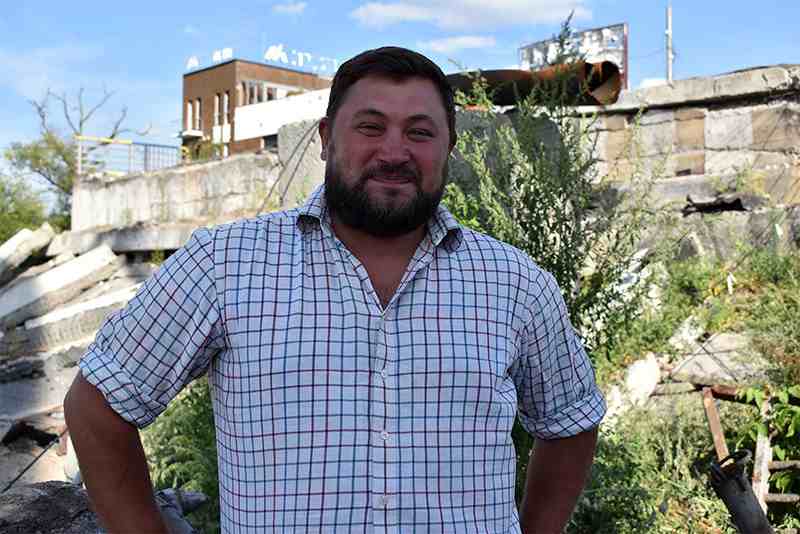
Roman Mokruk, 32, a supervisor for the construction site, once evacuated with his family to the relatively safe western part of the country. However, he returned to Kyiv by himself, saying that if the Russian army destroyed Ukraine, there would be no more chances to return to his hometown. He has deep feelings for the bridge, which has carried so many people. He is in favor of its preservation.
On the other hand, he also believes that “Many people want to return to their former peaceful lives. What is most needed is reconstruction.”
Local residents are working hard to record the names of those who have lost their lives in the war, gazing as they do so at the national flag they’re writing on.
Special cooperation: Prof. Hidenori Watanave (University of Tokyo Graduate School)
Reporting: Makiko Yanada, Yomiuri Shimbun Correspondent
"World" POPULAR ARTICLE
-
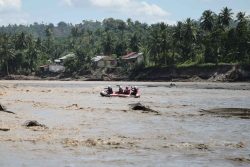
8 Japanese Nationals Stranded on Indonesia’s Sumatra Island
-

U.S. Senate Resolution Backs Japan, Condemns China’s Pressure
-

China to Impose Sanctions on Shigeru Iwasaki, Former Head of Japan’s Self-Defense Forces, Who Serves as Adviser to Taiwan’s Executive Branch
-
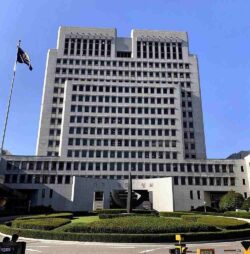
South Korea’s Top Court Dismisses Nippon Steel Appeal in Lawsuit over Requisitioned Worker
-
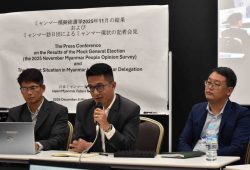
75% of Myanmar People Reject Army’s Political Involvement, According to Survey Conducted by Aid Organization
JN ACCESS RANKING
-

Tokyo Economic Security Forum to Hold Inaugural Meeting Amid Tense Global Environment
-

Keidanren Chairman Yoshinobu Tsutsui Visits Kashiwazaki-Kariwa Nuclear Power Plant; Inspects New Emergency Safety System
-

Imports of Rare Earths from China Facing Delays, May Be Caused by Deterioration of Japan-China Relations
-

University of Tokyo Professor Discusses Japanese Economic Security in Interview Ahead of Forum
-

Japan Pulls out of Vietnam Nuclear Project, Complicating Hanoi’s Power Plans
